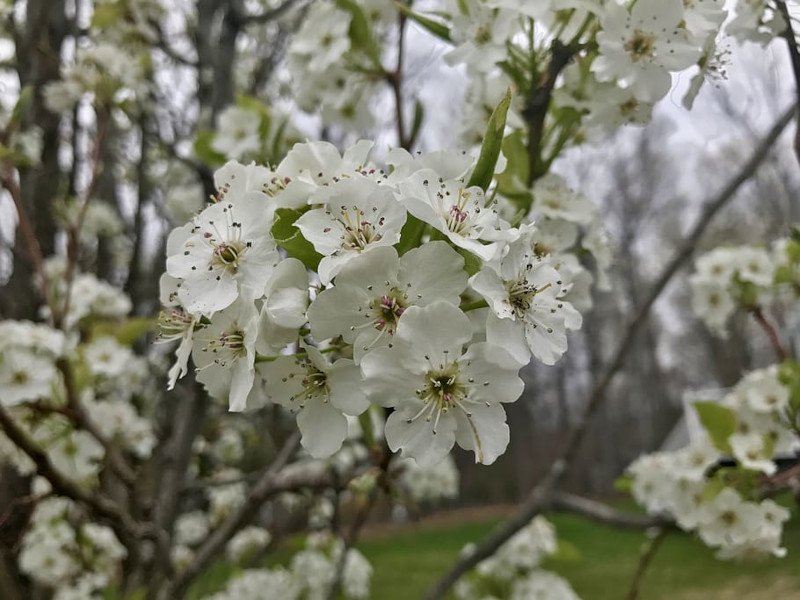
Great Rhododendron Facts
- This magnificent botanical marvel most frequently goes by the fully deserved common name of the Great Rhododendron. Yet the stunning plant also has several other, less often used general titles. These include the terms rosebay rhododendron and great laurel, among others.
- In the scientific community, though, it’s perhaps much better known by its technical title. That’s a term that, while somewhat lengthy, remains reasonably simple for the layperson to pronounce. That’s because it holds the technical moniker of Rhododendron maximum.
- This breathtaking variety of flora received that particular appellation due to the efforts of Carl Linnaeus himself. The esteemed Swedish botanist accomplished the first official recognition of the plant as a separate and distinct species. He achieved that notable deed in 1753.
- It stands out from its many related species due to sheer size. That’s true since it represents one of the largest of all known varieties of rhododendron. Due to the combination of beauty and dimensions, it’s become extremely popular for landscaping in appropriate climates.
- Although the Great Rhododendron appears in a very specific range, it seems to be maintaining an abundant wild population. That further seems to hold true across the entirety of its known native range. The IUCN thus lists it as Least Concern on its Red List of Threatened Species.
- It nevertheless still faces at least a few potential threats to its continued existence as a species in the wild. Most of these dangers stem from human activities, both directly and indirectly. Chief among these are the dual related threats of habitat loss and ongoing climate change.
Related Articles
Great Rhododendron Physical Description
The stunning Great Rhododendron truly merits its name. It also quickly captivates those who encounter it, either in the wild or when cultivated. Its beauty alone isn’t the only reason for this, though. That’s due to the fact that it clearly earns the title great, given its impressive size.
This variety of evergreen shrub generally attains heights measuring around 13 ft (4 m) at its full growth. Some specimens, however, grow significantly larger than this. In fact, under fully ideal environmental conditions, the amazing Angiosperm sometimes reaches heights of 33 ft (10 m)!
Its primary branches occasionally become quite thick and sturdy. These often display a thick, broken bark-like texture, quite similar to a tree. This also typically shows as a light brownish-tan shade. Its numerous smaller branches, meanwhile, generally display a lighter green color.
The breathtaking plant also boasts some remarkable foliage. Its leaves develops as bluish-green elongated ovals, with a leathery texture. Depending on the size of plant, these range in length from 3.5 – 7.5 in (9 – 19 cm). Each also usually measures from 0.8 – 1.57 in (2 – 4 cm) in total length.
Yet its unquestionably the flowers of the Great Rhododendron that unquestionably form its most appealing feature. These fabulous bell-shaped blooms typically appear in clusters. Normally, a group holds between 16 – 24 of these, all of which range in color from a pale white to purplish pink hue.
The fruit of this marvel of botanical beauty develops as an extremely dry capsule structure. This part of the plant averages approximately 0.6 – 0.8 in (1.5 – 2 cm) in length. Despite its comparatively small size, though, each of these structures contains a large number of extremely small seeds.
- Kingdom: Plantae
- Phylum: Tracheophytes
- Class: Eudicots
- Order: Ericales
- Family: Ericaceae
- Genus: Rhododendron
- Species: R. maximum
Great Rhododendron Distribution, Habitat, and Ecology
The aptly-named Great Rhododendron evolved as endemic to a moderately broad expanse of the surface of the globe. That exact location, however, likely won’t surprise many people. That’s because this remarkable flora evolved as native to a portion of the continent of North America.
There, the hauntingly beautiful plant appears mostly within the United States, with a small portion occurring in southeastern Canada. It lives almost exclusively in the Appalachian Mountains, along the eastern section of the United States. That range extends from Alabama to Nova Scotia.
Although it’s proven itself to be adaptable, it shows decided preferences in its choice of habitat. That’s reflected in the fact that it evolved in the mountains. There, it principally occurs in regions of partial shade, possessing a precise combination of rich, moist, acidic, and well-drained soils.
The greatest concentration of the Angiosperm occurs in what’s now the Great Smoky Mountains National Park. This protected area straddles the borders of Tennessee and North Carolina. In total, the plant appears in 12,000 sq mi (31,080 sq km) in the southern portions of these mountains.
In its native environment, the Great Rhododendron tends to dominate much of the understory. The floral marvel mainly reproduces via vegetative cloning, but also does so through sexual means. Its primarily pollinators consist of mulitiple local insect species, such as bees and butterflies.
Following blooming, the dry seed capsules appear between the months of March and August. Each contains about 400 small seeds. Some animals, mainly deer, feed on the plant. But, for humans, the leaves are relatively toxic. Certain chemicals in the species do have medicinal uses, though.
Species Sharing Its Range
Check out our other articles on 4 Phenomenal Philippine’s Reptiles, Bluespotted Ribbontail Ray, Sacred Valley, Alligator Snapping Turtle, Southern Plains Bumblebee, Nicobar Pigeon
